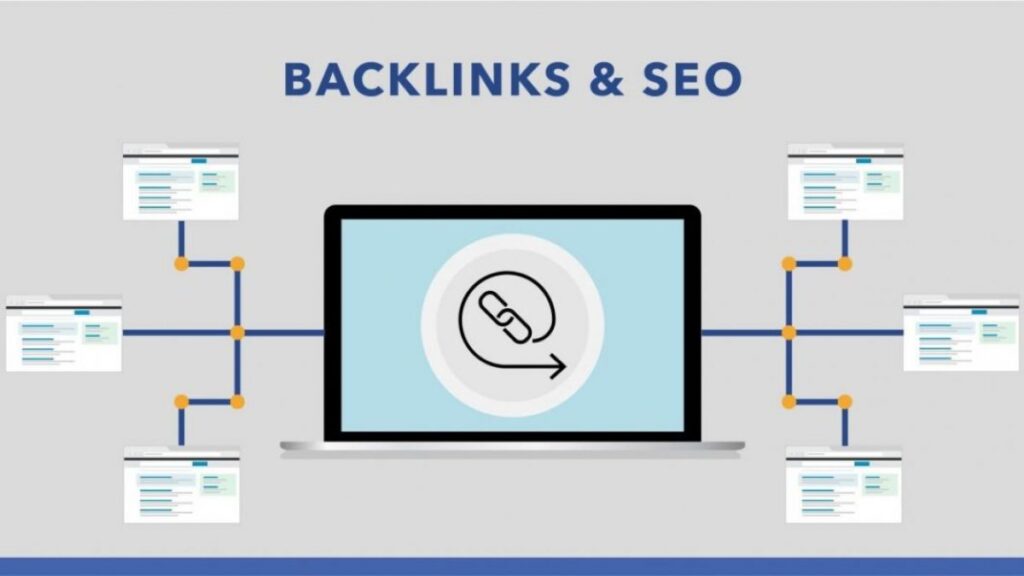Table of Contents
Ever feel like SEO is just a big mystery filled with endless strategies and weird terms? Same here. But here’s one thing that never seems to go out of style: backlinks in SEO.
Seriously, backlinks are like the OG ranking factor. Even with all the new updates, AI tools, and fancy features in Google’s algorithm, backlinks still carry a ton of weight. If you want your website to show up on the first page of Google, you can’t afford to ignore them.
So, what are backlinks? Why do they matter? And how can you get them without feeling like a scammy marketer? Let’s break it down in plain English.
What Exactly Are Backlinks in SEO?
Alright, here’s the simple version: a backlink is just one website linking to another.
Think of it like a recommendation. If a well-known blogger links to your article, it’s like they’re saying, “Hey, this content is actually useful.” And guess what? Google listens.
That’s why backlinks in SEO are so powerful. The more websites (especially reputable ones) that link to your content, the more Google trusts you—and the better your chances of ranking higher.
Why Backlinks in SEO Still Matter in 2025
You might be wondering: “Aren’t backlinks kind of old-school?”
Nope. Not even close. Despite all the shiny new trends in digital marketing, backlinks in SEO are still a major ranking factor.
Here’s why:
1. They Boost Your Search Rankings
More quality backlinks = more authority = higher Google rankings. It’s not wizardry—just the way Google’s algorithm plays the game.
2. They Help Google Find You Faster
When a popular site links to your page, Google’s bots find it quicker. That means your content gets indexed faster, and you start showing up in search results sooner.
3. They Bring in Real People
Backlinks aren’t just for SEO. If someone links to your blog in their article, their readers might click through—and boom, more traffic for you.
4. They Build Trust
When trustworthy sites link to you, it builds credibility. People are more likely to take you seriously—and so is Google.
Not All Backlinks Are Equal
Okay, here’s where it gets a little more technical—but stick with me.
There are different types of backlinks in SEO, and not all of them help your rankings the same way.
DoFollow Backlinks
These are the ones you want. They transfer credibility from one website to another—kind of like a digital thumbs-up. Most editorial links fall into this category, and they’re gold.
NoFollow Backlinks
These don’t pass SEO juice, but they’re still useful for traffic and a natural link profile. Think of them as supportive sidekicks.
UGC and Sponsored Tags
Google also introduced rel="ugc" (user-generated content like forum posts) and rel="sponsored" (for paid links). They’re transparent, but not super strong SEO-wise.
How to Build Backlinks in SEO (Without Being Pushy)
Here’s the good news: you don’t have to beg for links or get stuck in sketchy link exchanges. There are smarter, more authentic ways to build backlinks in SEO that actually work.
1. Create Really Good Content
I know, everyone says this—but it works. Create stuff that’s helpful, insightful, and unique. Think guides, original research, or tools people want to share.
2. Guest Blog Like a Pro
Reach out to blogs in your niche and offer to write something valuable. It’s a total win-win: you earn a backlink, and they score quality content for their site.
3. Try Broken Link Building
Find broken links on relevant sites, then suggest your content as a replacement. You’re doing them a favor—and scoring a backlink.
4. Use the Skyscraper Technique
Take a popular article and make it better—more detailed, more updated, more awesome. Then reach out to the people who linked to the original.
5. Answer Journalist Requests
Sites like HARO (Help A Reporter Out) connect you with journalists looking for expert quotes. Land a mention, and you get a high-authority backlink.
6. Make Shareable Visuals
Infographics, charts, and templates get shared and embedded. Every time someone uses it, they’re likely to link back to you.
7. Be Active in Online Communities
Answer questions on Reddit, Quora, or niche forums. Drop a backlink when it makes sense—but keep it helpful, not salesy.
8. Build Internal Links Too
Okay, these aren’t external backlinks, but they help with SEO and user experience. Link between your blog posts to spread the love.
9. Reach Out, But Keep It Real
Cold outreach still works—but only if you make it personal and genuine. Don’t spam. Offer real value, and you’ll be surprised how many people are open to linking.
Quick Reality Check: Myths About Backlinks in SEO
Let’s bust a few common myths real quick:
“You need thousands of backlinks.”
Nope. A few quality links can beat out hundreds of low-quality ones.
“All backlinks help SEO.”
Not true. Getting links from sketchy or off-topic sites? That can actually hurt your SEO more than help it.
“You can’t influence backlinks.”
You totally can—by creating great content and building relationships. It just takes time.
How to Track Your Backlinks (Without Losing Your Mind)
Building backlinks is awesome, but you’ve also got to track them. Here’s how:
- Google Search Console: It gives you a clear view of who’s linking to your site—no cost, no hassle.
- Ahrefs / SEMrush / Moz: More advanced tools that give you deeper insights into your backlink profile.
- Google Analytics: It helps you spot which backlinks are actually bringing in real visitors.
- Rank Trackers: Monitor how your keyword rankings improve over time as you build links.
Look at things like:
- How many sites link to you
- How strong those sites are (Domain Authority or DR)
- How relevant they are to your niche
- Whether your traffic and rankings are improving
Final Thoughts: Backlinks in SEO Are Still Your Secret Weapon
If you’ve made it this far, you already get it—backlinks in SEO are still one of the best ways to climb the Google ladder.
You don’t need tricks or shortcuts. You need consistency, quality content, and a smart outreach strategy. Keep your approach honest and helpful, and you’ll earn backlinks that actually matter.
So whether you’re brand new to SEO or just looking to level up, start making backlinks part of your regular routine. Your rankings, traffic, and reputation will thank you.

